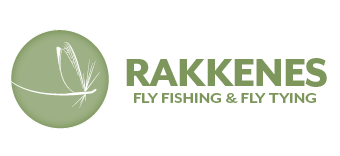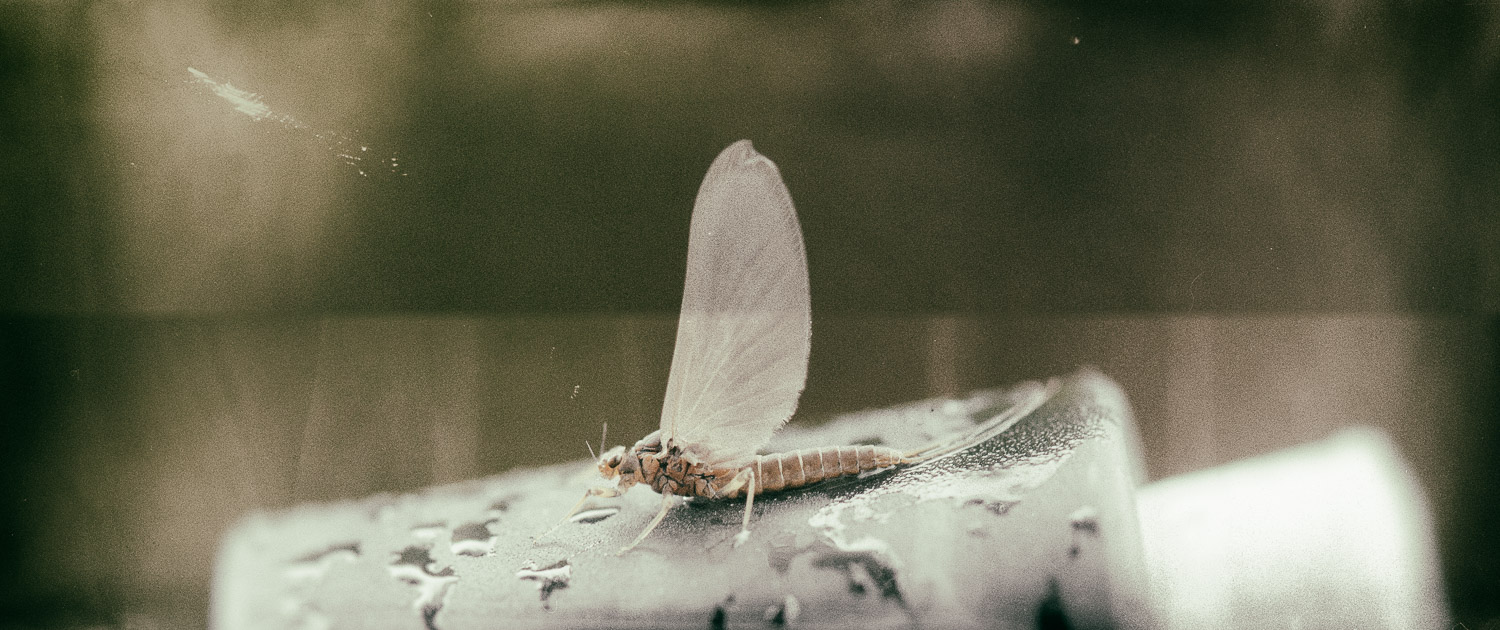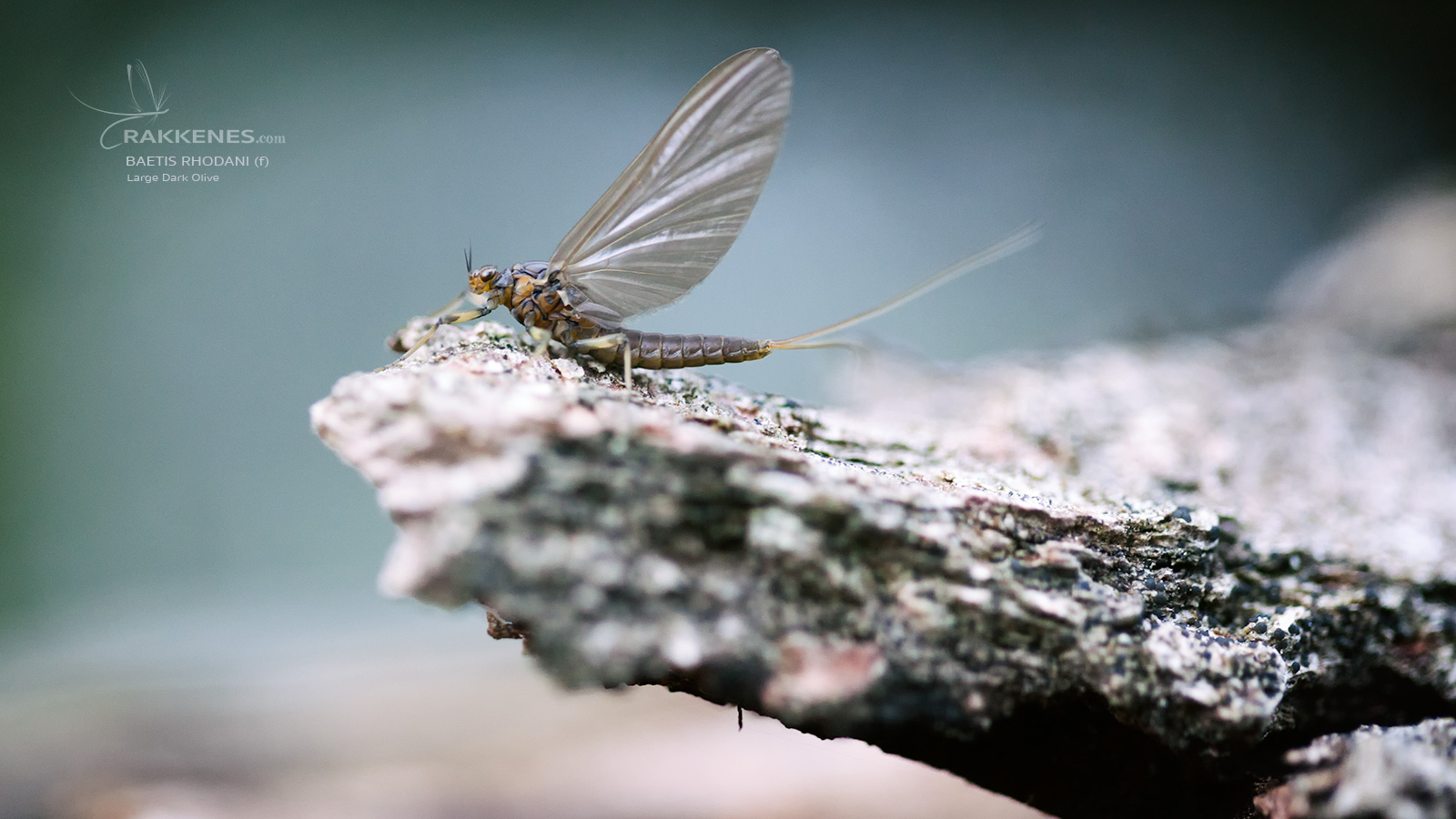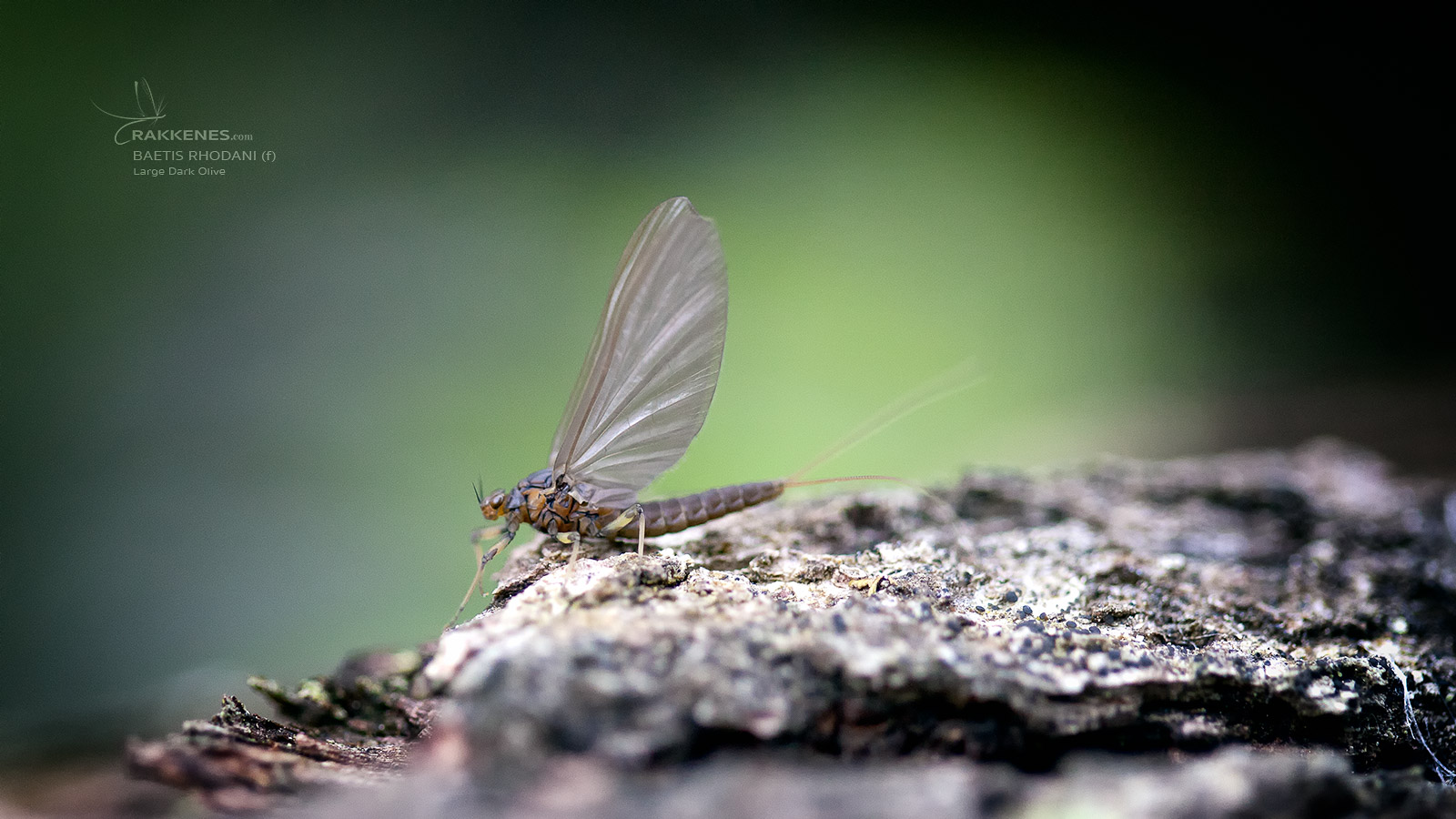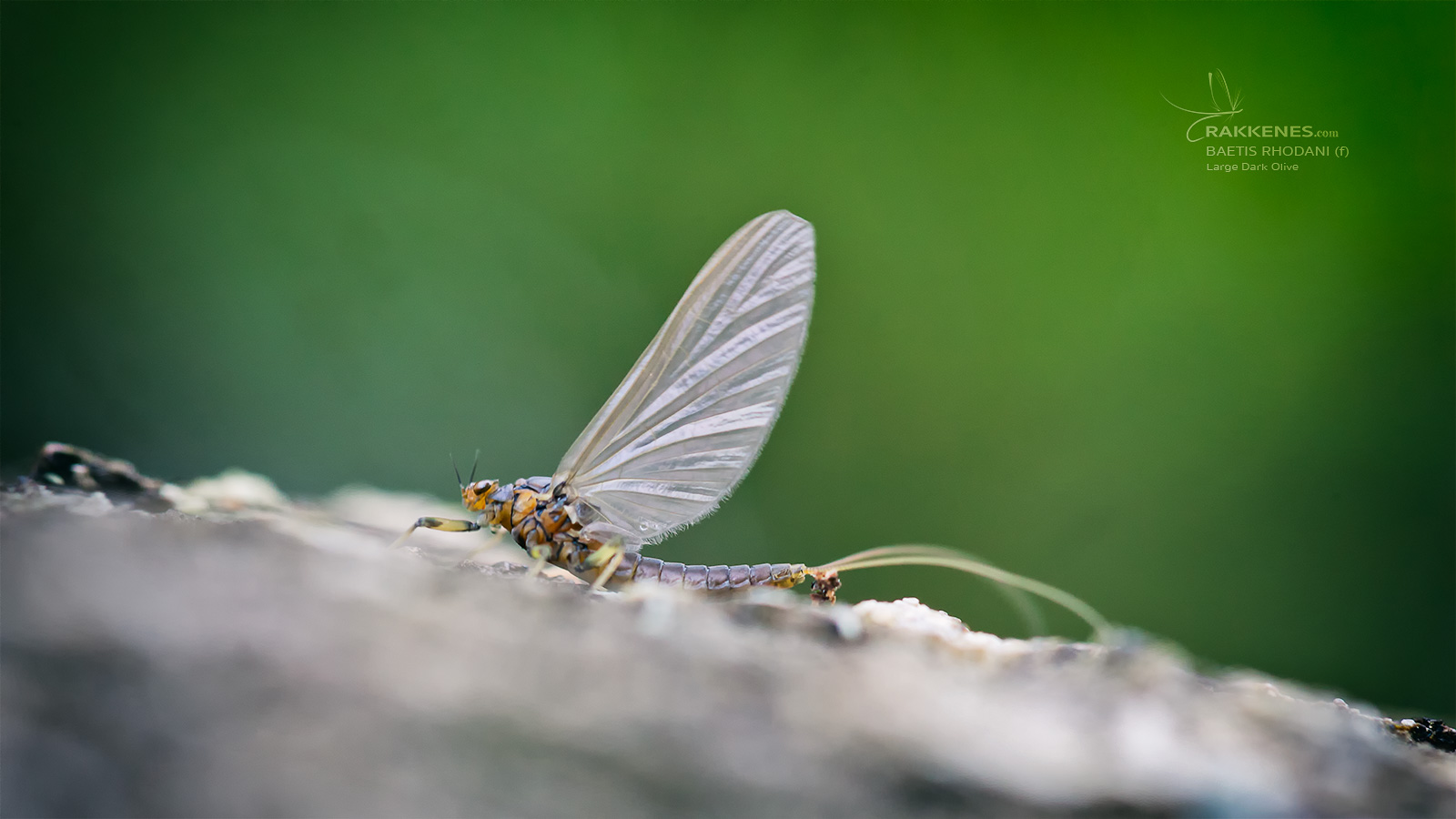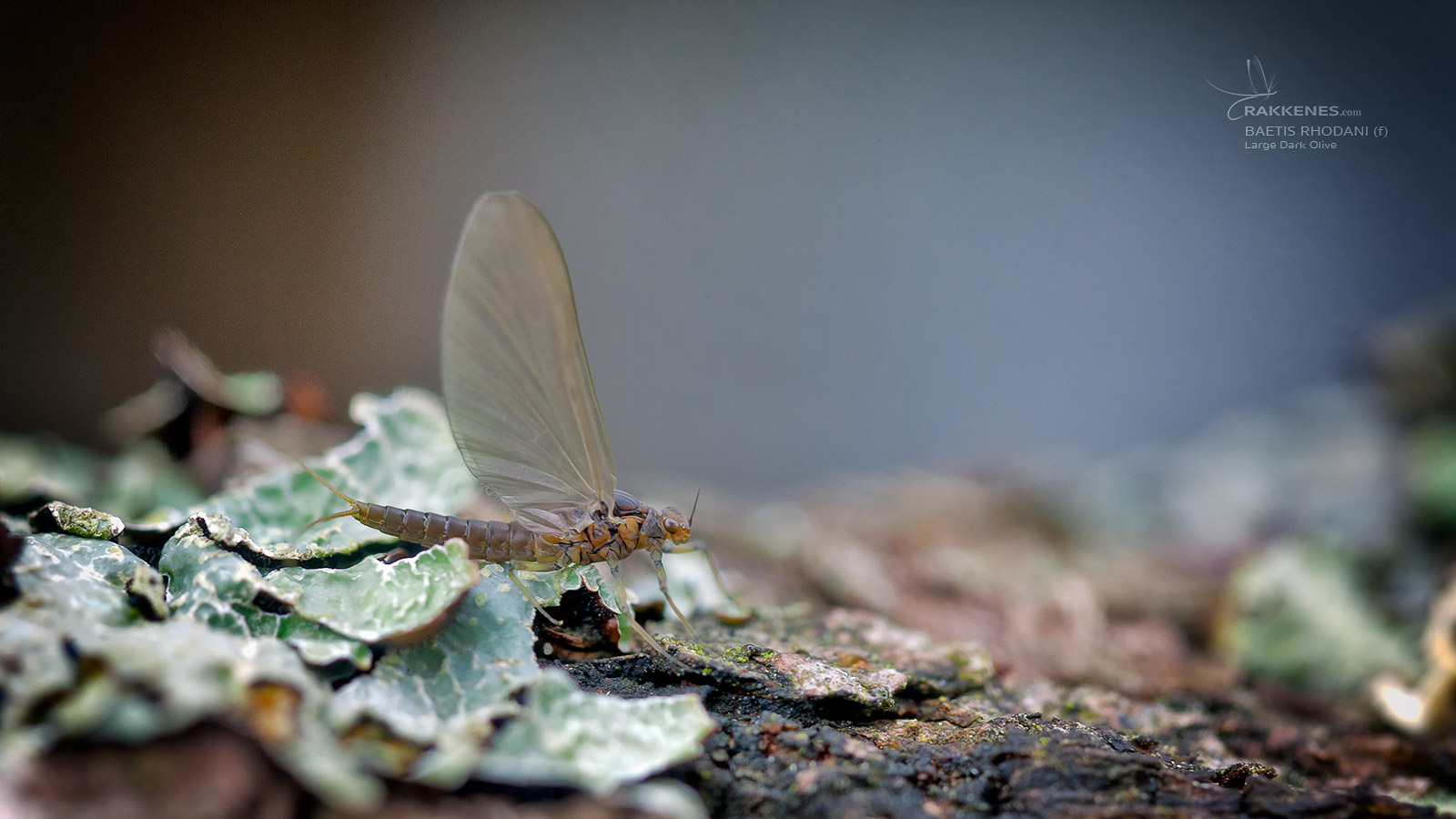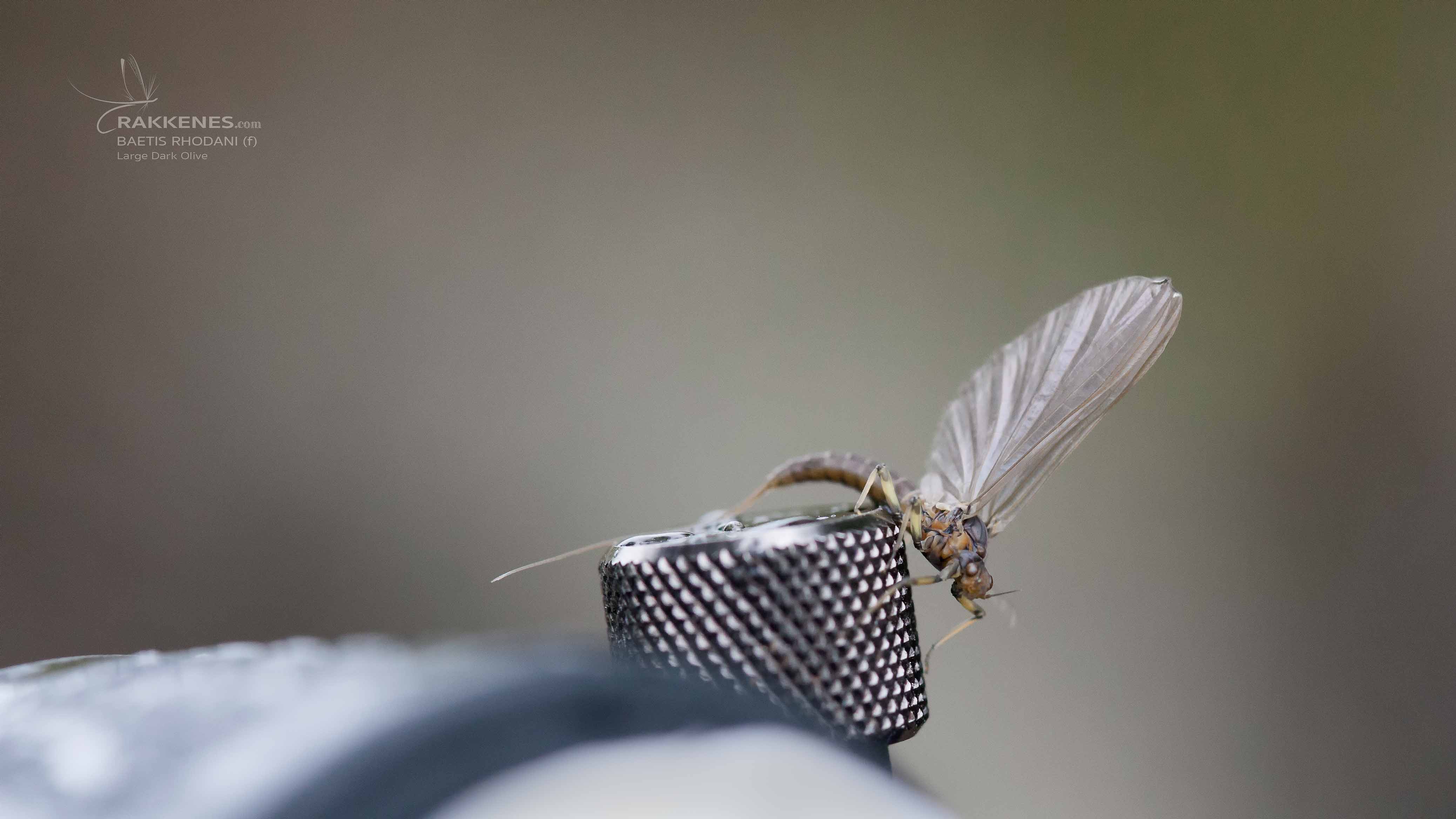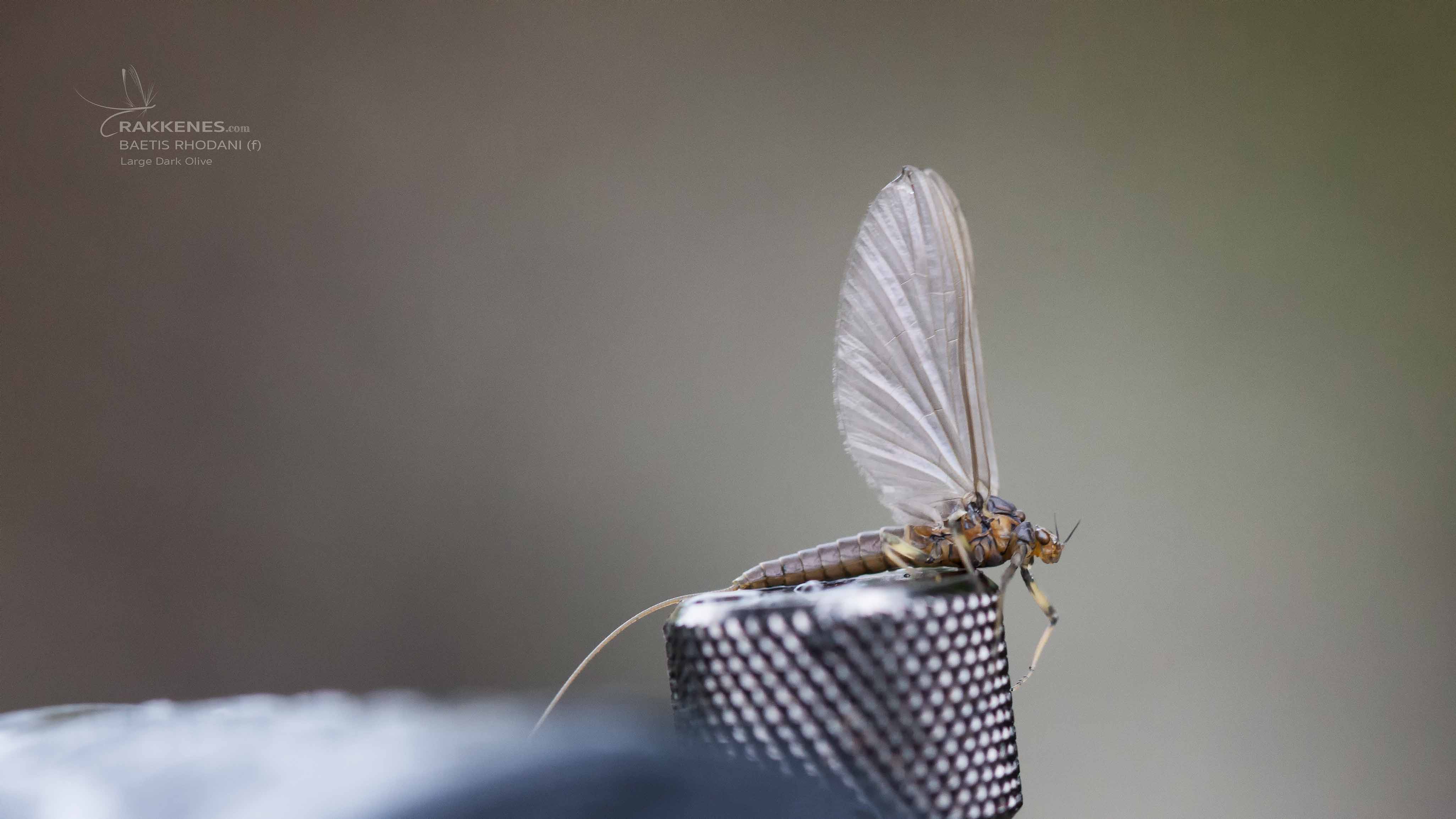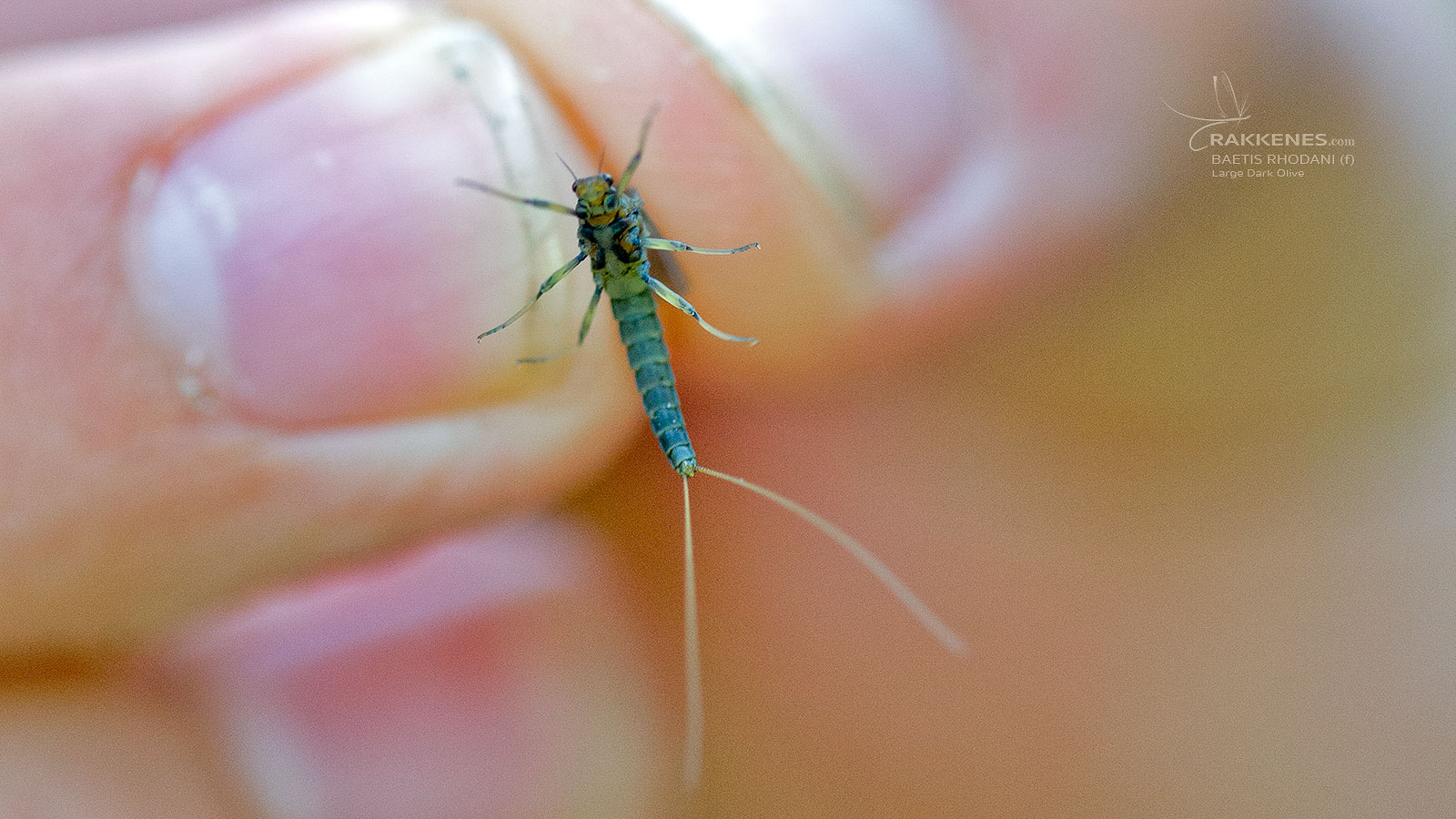The Baetis Rhodani, the Large Dark Olive, is a robust fly. Unlike most other mayflies, it’s prone to high acidity levels. The Rhodani tolerates pH-levels down to 4,8-4,6 but thrives best at levels above 6.
The Baetis Rhodani lives in running water, ranging from slow currents to fast flowing rivers.
Although it’s obvious, the Large Dark Olive belongs to the Baetidae family. The Baetis Niger (The Southern Iron Blue) and the Baetis Scambus (Scarce Iron Blue) hatch in the same period, or just after the Baetis Rhodani.
The Baetis Rhodani Imago
The size of the adult Baetis Rhodani (imago) varies with the time of year it is hatching. Ranging from 5-11 millimeters, you can expect the spring and early summer hatch to yield sizes from 9-11 millimeters. During the second hatch in fall they come in considerably smaller sizes, most often observed from 6-8 millimeters.
If you are a fly tier, you typically would tie the Baetis Rhodani on a standard dry fly hook size 14 for the spring and then downsize to 16 and 18 for the fall hatch.
The Baetis Rhodani usually hatch in bad ass weather. When the water temperature allows, the time of the year is right, you can be certain of a good hatch when the forecast says light rain, high humidity and air temperatures above 10-12 degrees Celcius.
It can be difficult to extinguish the Baetis Rhondani from other species in the Baetidae family. But hallmarks of the Baetis Rhodani are small, or nearly invisible, hind wings with one clearly visible bifurcated vein on the wing, a depiction of a fox face on the back of the thorax (underside) and some other characteristics in the joints of the legs.
These characteristics are difficult to see with the naked eye. You really need magnifying equipment of an entomologist to distinguish the Baetis species. For the practical angler, you can be pretty certain of a Rhodani hatch if its late May/early June, a Baetis is hatching (Identify by looking at the small hind wing), the size is about hook size 14 and the fish go crazy.
Color variation
The Baetis Rhodani is often described as a brownish olive mayfly. The color of the fly varies with the local conditions and habitats where they live, and the season they hatch. My experience is that the Baetis Rhodani tend to have a lighter and grayish hue in the early season hatch. Using FlyRite No. 10 Blue Wing Olive, No. 29 Western Olive or even No. 26 Adams Gray are good starting points for the first hatch. In fall I would recommend a darker olive, for instance Fly Rite No. 3 Dark Olive or No. 46 Dun Olive.
Two hatches each season
Usually the hatch cycle in southern and eastern part of Norway start in mid may. But since most rivers in this region are sensitive to rainfall and melting snow from the mountains, the real fishable hatch seldom kicks off before early June. A typical hatch cycle can last for as long as six weeks. But they are seldom efficient as imitations for the entire period, since other insects start hatching in the period, for example the Ephemerellas and the Ephemera Danica (The Mayfly).
In fall they hatch a second time from September and very often into October. These hatches can be fun to fish, but very often the Baetis Rhodani is dominated by the Emphemerella Ignita. In such cicumstances it could be a good idea to switch to a fly the same size but with a different color (golden olive).
- The Paradun (Parachute) is a safe pattern in most instances.
- Trout seem to love slender and well-proportioned bodies
- The Rhodani very often sit flat on the surface. Therefore, make sure the footprint on the surface is clean, not distracted by hackle.
- The Baetis Rhodani often have irregular or erratic motion just after hatching. Tie a CdC wing that moves with the breeze and give the fly a tiny drag just as it passes over the trout’s wondow to simulate the stressed fly.
- I usually avoid Baetis Rhodani emerges. I simply do not find them efficient. The Rhodani are fast emergers, and sit for a long time on the surface to dry their wings (since they usually hatch in humid weather).
- A comparadun is an excellent choice when trout are picky. Fran Betters pattern really gives the fly all the characteristics needed (as described above). Early in the hatch, and especially in overcast weather, I do recommend to try out Craig Mattew’s Sparkle Dun pattern.
- Here are my favourites: The Baetis Rhodani Paradun and The Grey Baetis Sparkle Dun
